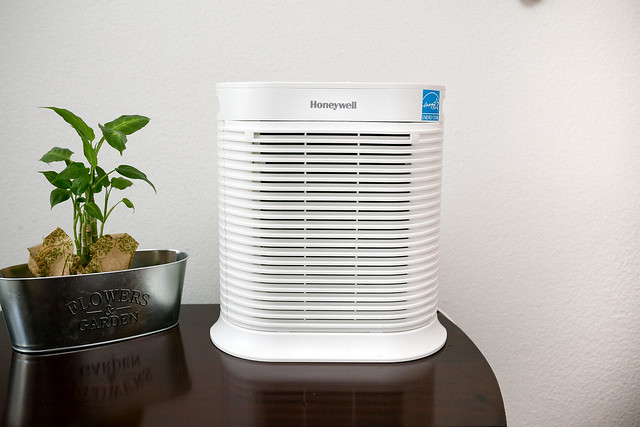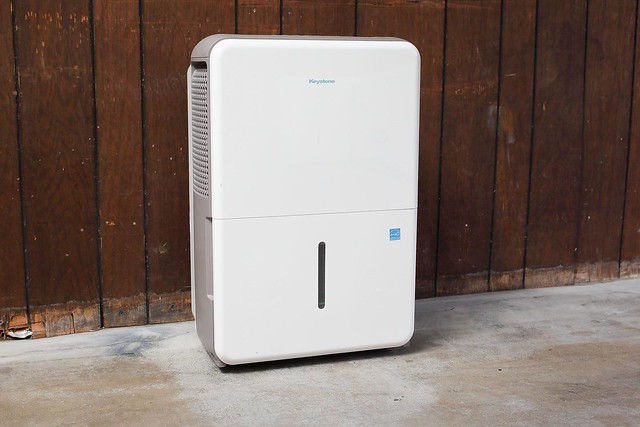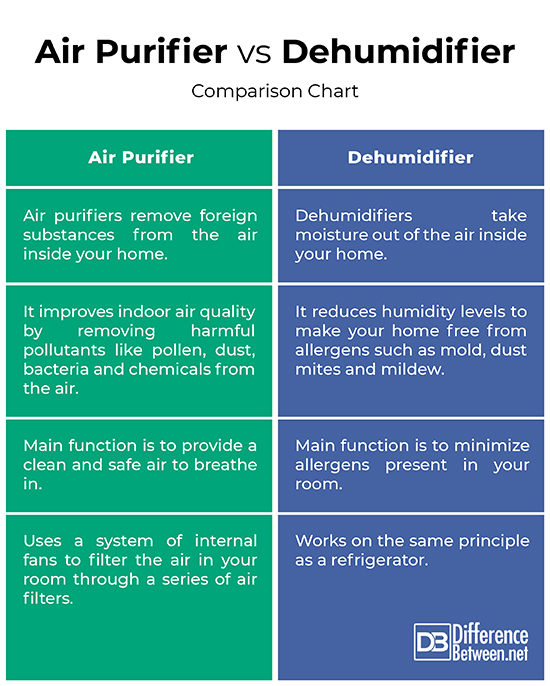Difference Between Air Purifier and Dehumidifier
Whoever said “Home is where the heart is” is absolutely right because there is no place like home. Home is the feeling of being you and home is where everyone is most emotionally attached. So a place where your heart is requires special care. People want their homes to be clean and healthy and the air we breathe to be clean and safe. Indoor air can be potentially dangerous for two main reasons: pollutants and poor ventilation. Pollutants make your home less hospitable while poor ventilation makes it a little hard to breathe fresh air. This is where air purifiers come to the rescue.
Air purifiers make sure the air we breathe is clean and safe. Air purifiers improve indoor air quality by removing harmful pollutants like pollen, dust, bacteria and chemicals from your home’s air. Then there are dehumidifiers, which take moisture out of your home’s air thereby reducing humidity levels to make your home free from allergens such as mold, dust mites and mildew. However, an air purifier is not to confuse with a dehumidifier because they are very different things. We take a look at some key differences between the two to help you understand the function of each.
What is Air Purifier?
Air purifier, as the name suggests, purifies indoor air quality of your home by removing pollutants like pollen, dust, chemicals and bacteria from the air. Air purifiers are widely used for removing foreign substances from the air. The foreign substances include dust, dander, pollutants, smoke, ozone, etc. Most of the homes, even the cleanest ones, have poor indoor air quality. The air purifiers remove these particles from the air that you breathe to make it clean and safe. There are different types of air purifiers available on the market, each with different purpose and functions. Carbon air purifiers use activated carbon as an air filter; Ozone air purifiers release ozone into the air to remove chemical fumes, odors, and bacteria; Ionic air purifiers utilize electrostatic precipitators by creating an electrical field and as a result the dirt and debris in the air become ionized.
What is Dehumidifier?
Dehumidifier takes the moisture out of the air in your home until the humidity setting is reached. A Dehumidifier draws air from the room into the unit and passes it over a set of cold coils, so that the water vapor condenses on them and collects in a reservoir tank. The cold air is then drawn by a fan over heated coils before it gets back to the room as additional heat. Unlike air purifiers, a dehumidifier reduces the humidity level in your room, making your home less hospitable to allergens. A standard dehumidifier for domestic use is usually built into a floor-standing cabinet. It contains a humidistat which automatically switches on the unit when the humidity level inside the room reaches a predetermined level.
Difference between Air Purifier and Dehumidifier
Basics
– Air purifiers remove foreign substances from the air inside your home and improve indoor air quality by removing harmful pollutants like pollen, dust, bacteria and chemicals from the air. The air purifiers remove these particles from the air that you breathe to make it clean and safe. Dehumidifiers, on the other hand take moisture out of the air inside your home thereby reducing humidity levels to make your home free from allergens such as mold, dust mites and mildew. It takes the moisture out of the air in your home until the predetermined humidity setting is reached.
Function
– The main function of air purifiers is to purify indoor air quality of your home in order to provide a healthy and comfortable indoor environment better for people. It removes contaminants from the air in your poorly ventilated homes by filtering the air through a series of filters, thereby providing a clean and safe air to breathe in. Like an air purifier, a dehumidifier is also an electrical appliance except it works to minimize allergens present in your room by reducing humidity levels inside your room to make it free of allergens like mod, dust and mildew.
Working
– Air purifies use a system of internal fans to filter the air in your room through a series of air filters that remove the contaminants from the air and circulate the fresh air back to the room. Different types of air purifiers are used: HEPA purifiers use a fine cloth to filter; Ozone air purifiers release ozone into the air to remove chemical fumes, odor and bacteria; Carbon air purifiers use activated carbon as an air filter; and Ionic air purifiers utilize electrostatic precipitators by creating an electrical field and as a result the dirt and debris in the air become ionized.
A standard dehumidifier for domestic use is usually built into a floor-standing cabinet. It contains a humidistat which automatically switches on the unit when the humidity level inside the room reaches a predetermined level. It works on the same principle as a refrigerator – the air is drawn into the unity and passed over a set of cold coils, so that the water vapor condenses on them and collects in a water tank. The cold air is then drawn by a fan over heated coils before it gets back to the room as additional heat.
Air Purifier vs. Dehumidifier: Comparison Chart
Summary of Air Purifier vs. Dehumidifier:
While both air purifiers and dehumidifiers work to minimize or eliminate allergens present inside your home, they are very different in how they operate. While an air purifier uses a system of internal fans to filter the air in your room through a series of air filters in order to provide a clean and safe air to breathe, a dehumidifier takes the moisture out of the air inside a room by reducing humidity levels to make your home free from allergens such as mold, dust mites and mildew.
- Difference Between Caucus and Primary - June 18, 2024
- Difference Between PPO and POS - May 30, 2024
- Difference Between RFID and NFC - May 28, 2024
Search DifferenceBetween.net :
Leave a Response
References :
[0]Image credit: https://www.flickr.com/photos/yourbestdigs/29309354998
[1]Image credit: https://www.flickr.com/photos/yourbestdigs/41779663525
[2]Morrison, Jeffrey. Cleanse Your Body, Clear Your Mind. London, United Kingdom: Penguin Books, 2011. Print
[3]Becker, Norman. 500 Simple Home Repair Solutions. New York, United States: Sterling Publishing, 2008. Print
[4]Jackson, Albert and David Day. Popular Mechanics Complete Home How-To. New York, United States: Sterling Publishing, 2009. Print



